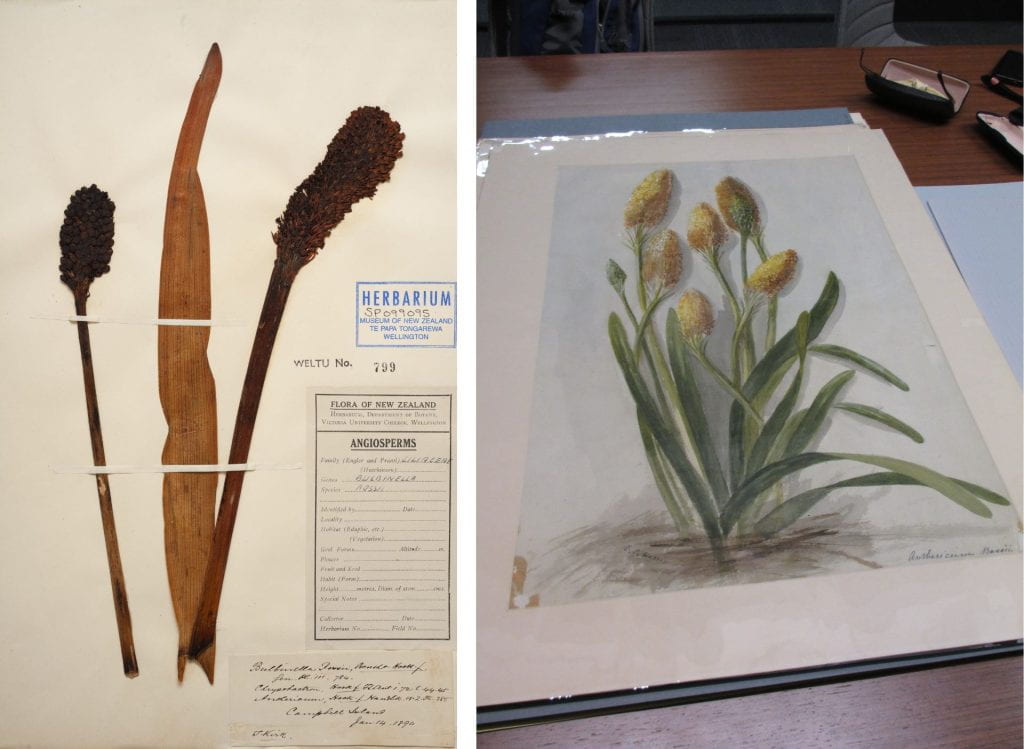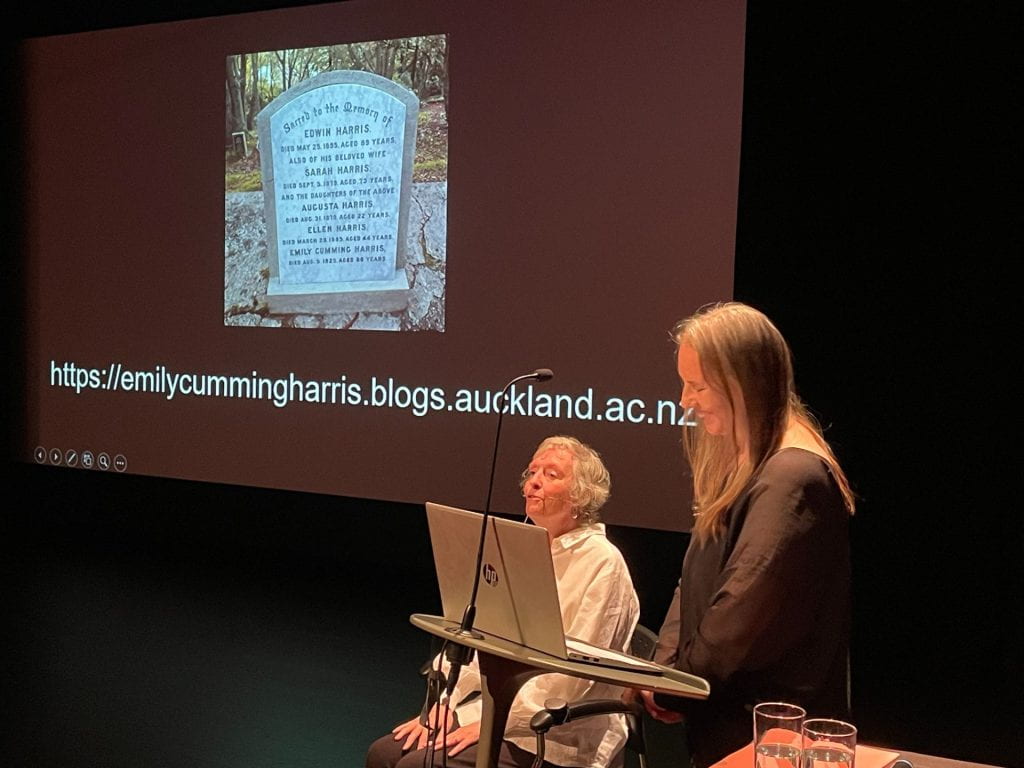By Michele Leggott and Catherine Field-Dodgson
We are pleased to confirm that Te Papa Press of Te Whanganui-a-Tara Wellington will publish our Emily Harris book in 2025. Full-colour reproduction of Emily’s paintings and drawings will accompany a text that traces her art and writing across the nineteenth and early twentieth centuries.
Our project restores the visibility of an important forebear for women who write, draw and paint in Aotearoa New Zealand.

How did we forget her? Emily Cumming Harris (1837-1925) was a vibrant writer of poems, letters and diaries whose career as a botanical artist included nineteenth and twentieth century works. Her art is known to museum curators and art historians, but her writing has received little attention. The discovery of poems and letters written in 1860-61 during the first Taranaki War sparked a search for more traces of her life and writing. From her emigrant childhood in Taranaki to her wartime experience working for a wealthy family who took her with them when they evacuated to Hobart in 1861, Emily Harris’s story provides insights into a past that speaks to our decolonising but often forgetful present.

Returning to her family in Nelson in 1865, Emily set about making a career for herself as a painter of botanically accurate flora, exhibiting in Sydney, Melbourne and London as well as in Auckland, Whangārie, New Plymouth, Whanganui, Wellington, Nelson, Greymouth, Hokitika, Christchurch and Dunedin. The difficulties of being a single woman in a family without means was a continual threat to her productivity, and her later years extend the struggle she undertook for recognition of her artistic achievement. There were some compensations along the way. Stunning watercolours of Sub-antarctic mega-herbs and rare mountain flowers were produced in collaboration with botanists who supplied specimens for her to paint, many of which are still in the botany collections at Te Papa. Near life-size depictions of Sub-antarctic plants and forest flora were among the large oils commissioned for exhibition in Christchurch in 1906. Emily Harris’s exhibition history currently extends from 1869 until 1922, when she was 85 years old.


Michele Leggott is a poet and editor with a consuming interest in archives and the poetics of memory. She has published eleven collections of poetry and was the New Zealand Poet Laureate 2007-2009. Her archival work includes a monograph on the late poetry of American Modernist Louis Zukofsky and editions of the poetry of New Zealander Robin Hyde, as well as a foray into 1960s New Zealand poetry and a selected edition, with Martin Edmond, of the poems of Alan Brunton. She received the Prime Minister’s Award for Literary Achievement in Poetry in 2013. In 2017 she was elected a Fellow of the Royal Society of New Zealand. Michele lives in Tamaki Makaurau Auckland.
Catherine Field-Dodgson (Rongowhakaata, Ngāi Tāmanuhiri, Te Aitanga a Mahaki) is the author of ‘In Full Bloom: Botanical Art and Flower Painting by Women in 1880s New Zealand,’ a 2003 Masters thesis that includes the first detailed study of Emily Harris’s exhibiting practices. She is active in community and environmental organisations and a beginner learner of Te Reo Māori. She is currently researching her 2x great-grandmother Keita Halbert/Wyllie/Gannon and her connections to Tūranganui-a-Kiwa. Catherine lives in Te Awa Kairangi Lower Hutt, Wellington.

Fabulous! Roll on 2025
Congratulations Michele and Catherine.
Hugely looking forward to reading and seeing Emily
Ngā mihi Charlotte, we look forward to sharing some new discoveries! CFD
Congratulations Michele and Catherine, so pleased to hear of this confirmation, it is going to be a very prestigious publication. Love the title – very clever.
Thank you Mary, we have a lot to cover and loads more beautiful images! CFD
All good wishes as you prepare for publication on what will be a wonderful book. Catherine, did you know that Keita Gannon signed the 1892 Women’s Suffrage Petition in Gisborne? I wrote about her in Ambitious Gisborne Women published by Tairawhiti Museum in 2020.
Jean Johnston
Kia ora Jean, yes our family came up to Gisborne and visited your exhibition in 2020. But what I didn’t know until I purchased your ‘Colours Deluxe’ book last year is that Michael Joseph Gannon was an ‘Author’s Edition’ subscriber to the Art Album. Was a very pleasant surprise to read that!
Wonderful news team, and a testament to your hard work over the years!
Thanks Chanelle! So many wonderful people involved in all this research, including you and everyone we’ve worked with at Puke Ariki.